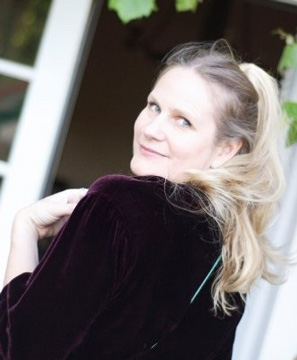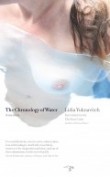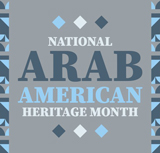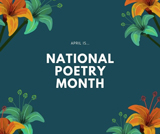 (Editor’s note: We first published this interview with Lidia Yuknavitch last March. We’re republishing it to celebrate her 2012 PNBA Award, which she’ll accept Tuesday, March 6 at 7 pm at Broadway Books in Portland.) If you love memoir or poetry or Ken Kesey or have ever spent time on the planet Sorrow, you’ll want to read The Chronology of Water by Portland author Lidia Yuknavitch. The memoir is somehow both brutal and dreamy—but it doesn’t collapse under the weight of its despair or lose you in the rapture of its pretty language. Yuknavitch has a powerful personal story to tell, and she does this in surprising ways.
(Editor’s note: We first published this interview with Lidia Yuknavitch last March. We’re republishing it to celebrate her 2012 PNBA Award, which she’ll accept Tuesday, March 6 at 7 pm at Broadway Books in Portland.) If you love memoir or poetry or Ken Kesey or have ever spent time on the planet Sorrow, you’ll want to read The Chronology of Water by Portland author Lidia Yuknavitch. The memoir is somehow both brutal and dreamy—but it doesn’t collapse under the weight of its despair or lose you in the rapture of its pretty language. Yuknavitch has a powerful personal story to tell, and she does this in surprising ways.
A lifelong swimmer and former Olympic hopeful, Yuknavitch uses the metaphor of water to tell the story of a childhood of abuse, the wreck of her early adulthood and the loss of her first child. Rebecca Brown (The Gifts of the Body) calls The Chronology of Water the kind of book Janis Joplin would have written “if she had made it through the fire—raw, tough, pure, more full of love than you thought possible and sometimes even hilarious.” And Chuck Palahniuk says he’s read it a dozen times and will “most likely, return to it for inspriration and ideas, out of sheer admiration, for the rest of my life.”
Yuknavitch teaches writing, literature, film and women’s studies in Portland. She’s the author of three works of short fiction: Her Other Mouths, Liberty’s Excess and Real to Reel, and a book of literary criticism, Allegories of Violence. Her work has appeared in Ms., The Iowa Review, Exquisite Corpse, Another Chicago Magazine, Fiction International, Zyzzyva, The Rumpus and elsewhere.
The Chronology of Water debuts this Friday from Portland’s Hawthorne Books & Literary Arts (we wrote about the publishing process here). Watch a trailer for the book here.
We asked Yuknavitch a few questions.
Your memoir is moving, shocking and sad to the bone. It’s beautiful, carnal, vulnerable and smart. And it features some of the best sex scenes I’ve ever read. It’s about life and death and grief and sex and water and books. Have you come up with a good way to describe the book in one line? It’s the story of how a swimmer resuscitated her self. And it is my hope that my small story can be a metaphor for other people. Do you know the Emily Dickinson poem, Two Swimmers Wrestled on the Spar? I’m both swimmers, I think. For part of my life I drowned, and for another part of my life, I saved a self. I bet I’m not the only one who feels this way, too. So it’s a book about how we can all do that, in spite of the difficulties. And thank you in waterfalls for the kind words!
 Will you play bookseller and build us a display around it, recommending either similar books (is there such a thing?) or books you love? What a treat! I know it would look weird but I’d pick books about the corporeal self. Walt Whitman’s Leaves of Grass, Kathy Acker’s Empire of the Senseless, Marguerite Duras’ The Lover,
Will you play bookseller and build us a display around it, recommending either similar books (is there such a thing?) or books you love? What a treat! I know it would look weird but I’d pick books about the corporeal self. Walt Whitman’s Leaves of Grass, Kathy Acker’s Empire of the Senseless, Marguerite Duras’ The Lover,  Gertrude Stein’s Tender Buttons, Allen Ginsberg’s Howl, Katherine Dunn’s Geek Love and Michelle Tea’s Valencia. I know. You are looking at those going “those aren’t memoirs.” But to me they are . . . they are all body stories.
Gertrude Stein’s Tender Buttons, Allen Ginsberg’s Howl, Katherine Dunn’s Geek Love and Michelle Tea’s Valencia. I know. You are looking at those going “those aren’t memoirs.” But to me they are . . . they are all body stories.
Water, your escape and your medicine, is the central metaphor of your memoir. The author Diana Abu-Jaber told you long ago in a creative writing workshop that your story was water. When did you know you were ready to tell this story, and how did you cope with reliving some of the painful events of your life—your father’s abuse and your mother’s alcoholism and the loss of your first child? I knew the moment exactly. My husband, Andy Mingo, and my son, Miles, and I were playing in the swimming pool at Salishan Lodge in Gleneden Beach, Oregon. My father used to take my family there for vacations; it was one of the few happy times I can remember with my sister and mother. On this particular day, my son, who had not yet learned to put his head underwater without holding his nose with his hand, dove down with his big head without holding his nose. So I dove down, too. And we looked at each other and smiled big goofy smiles through our goggles. The jolt of pure uninterrupted joy I felt in that moment gave me a sentence that shot clean through my skull: It is possible to move through sorrow to joy in water. Swimming became my central metaphor that day.
metaphor of your memoir. The author Diana Abu-Jaber told you long ago in a creative writing workshop that your story was water. When did you know you were ready to tell this story, and how did you cope with reliving some of the painful events of your life—your father’s abuse and your mother’s alcoholism and the loss of your first child? I knew the moment exactly. My husband, Andy Mingo, and my son, Miles, and I were playing in the swimming pool at Salishan Lodge in Gleneden Beach, Oregon. My father used to take my family there for vacations; it was one of the few happy times I can remember with my sister and mother. On this particular day, my son, who had not yet learned to put his head underwater without holding his nose with his hand, dove down with his big head without holding his nose. So I dove down, too. And we looked at each other and smiled big goofy smiles through our goggles. The jolt of pure uninterrupted joy I felt in that moment gave me a sentence that shot clean through my skull: It is possible to move through sorrow to joy in water. Swimming became my central metaphor that day.
Books and literature and writing and their healing ability are also a major theme. Will you describe the role of books and writing in coping with pain and grief? They save your life. I believe in art the way other people believe in God. Books took me out of my world and into the realm of imagination and alchemy. Music filled my ears enough that I could feel it in my whole body. Paintings often made me shake, and cry, and feel a little faint. Art is bigger than suffering. Or perhaps it accompanies suffering, the other swimmer in the ocean with us when we feel like we may drown.
 I loved reading about your relationship with Ken Kesey, who was a kind of father figure to you. The two of you shared the grief of having lost children and you both anesthetized that grief with drugs and alcohol. You also wrote together through his class, and he once told you that you had “the stuff” to make it as a writer. What would you say to him today if he were alive? Yes, a strange, psychadelic, father trip. Ha. I would tell him that I love him. I would tell him he helped me pull writing from my fingers. And I would tell him his books yet live inside my skin, that he’s in the matter of my life.
I loved reading about your relationship with Ken Kesey, who was a kind of father figure to you. The two of you shared the grief of having lost children and you both anesthetized that grief with drugs and alcohol. You also wrote together through his class, and he once told you that you had “the stuff” to make it as a writer. What would you say to him today if he were alive? Yes, a strange, psychadelic, father trip. Ha. I would tell him that I love him. I would tell him he helped me pull writing from my fingers. And I would tell him his books yet live inside my skin, that he’s in the matter of my life.
Would you have published this memoir while your parents were alive? No. Not because of my father’s possible reaction, but my mother’s. It would have made her sad. She was sad and in pain (physically and emotionally) her entire life. I would not have willingly contributed to that sadness as a woman and a mother. On the other hand, I know she would have said something like, “Belle, you said it right,” in her southern drawl, because she said that to me about the first story I wrote in high school, and that story had an abusive father and a little girl in it. Like the girls we both were, once.
 Will you tell us about how you selected Hawthorne as your publisher and what the publishing process has been like for you? Two reasons, really. First, because as agents and publishers began to tell me that they admired my manuscript but that I’d have to take 50% or more of it out or change it for it to see the light of day, mostly due to everything you say in your opening question, I thought, surely there is one good woman out there who can see and hear me. That woman turned out to be Rhonda Hughes, who read it in one night and called me to say this is the book I want (The cover is another example of how I know I chose well). And I chose Hawthorne Books because they published Clown Girl by Monica Drake, a book I ADORE. A person I adore.
Will you tell us about how you selected Hawthorne as your publisher and what the publishing process has been like for you? Two reasons, really. First, because as agents and publishers began to tell me that they admired my manuscript but that I’d have to take 50% or more of it out or change it for it to see the light of day, mostly due to everything you say in your opening question, I thought, surely there is one good woman out there who can see and hear me. That woman turned out to be Rhonda Hughes, who read it in one night and called me to say this is the book I want (The cover is another example of how I know I chose well). And I chose Hawthorne Books because they published Clown Girl by Monica Drake, a book I ADORE. A person I adore.
Chelsea Cain writes the introduction to your memoir, where she says the two of you are in therapy together. By which she means the writing group you two are in, which also includes Chuck Palahniuk, Cheryl Strayed, Monica Drake, Mary Wysong, Diana Jordan, Erin Leonard and Suzy Vitello. It’s an amazing group of writers, and it’s fun to have a little insight into what goes on in your group. Will you tell us a little about the role of your group in writing your memoir? Their role? Well there would simply BE no memoir without them. Chuck dared me to write one. Chelsea showed me how to bring my love for poetics out of the clouds and down into peoples hands. Cheryl taught me how the heart is a muscle that pushes language. Monica reminds me to laugh, and she is a fellow nerd. Mary and I keep each other secretly afloat as introverts. Erin likes my weird. And Suzy and I just now figured out that you know what? This age we are at? It’s the best time of our lives, and we’re going to revel in it! To be plain, I love them. I live them. Like Monica says, “Writing is a living practice.”



